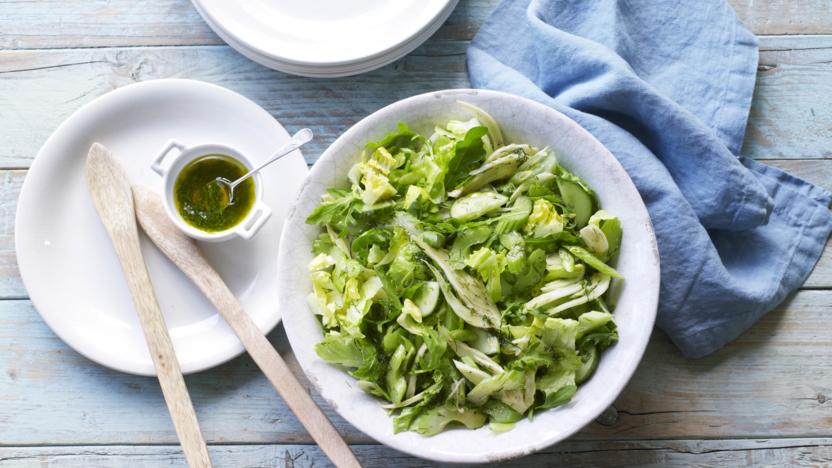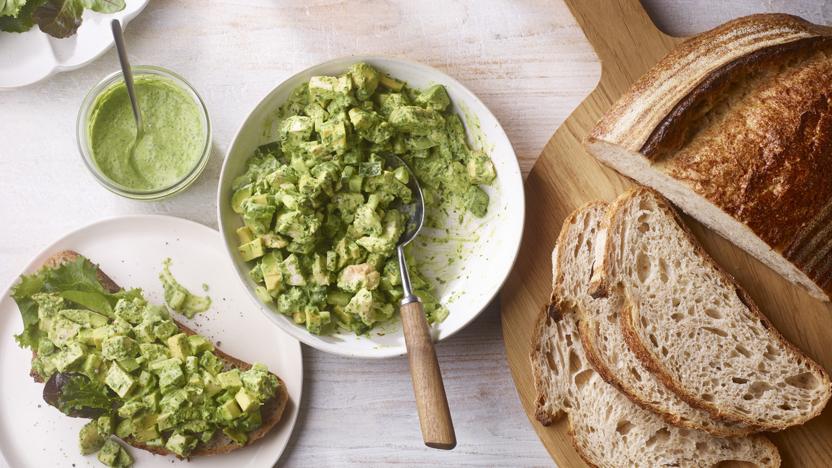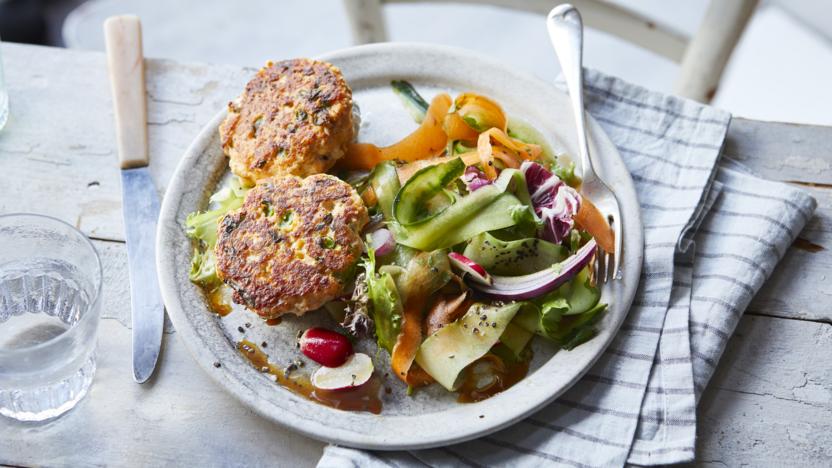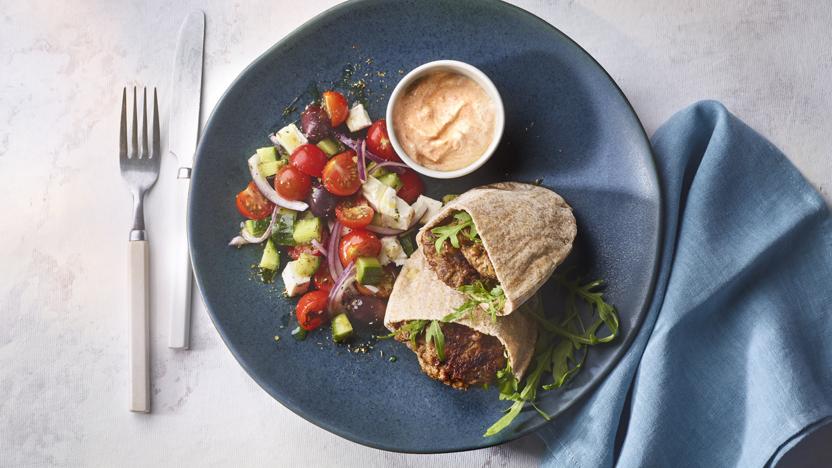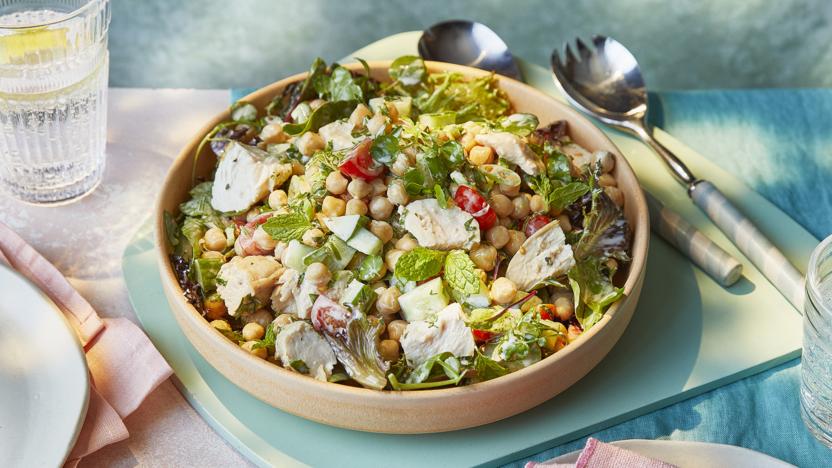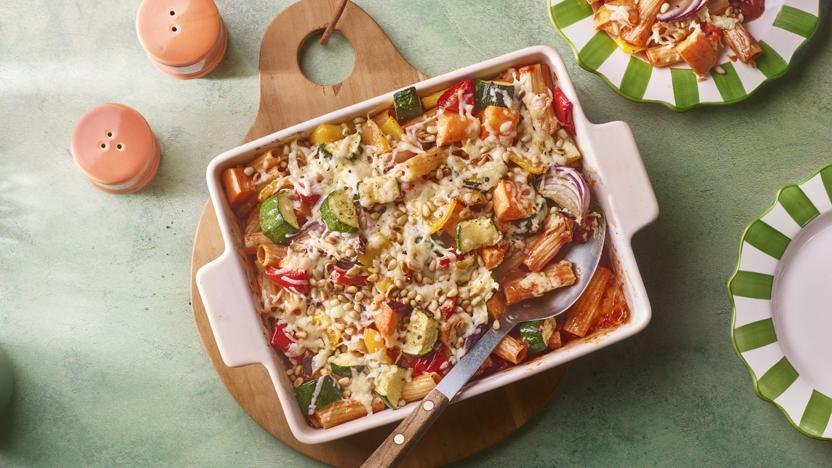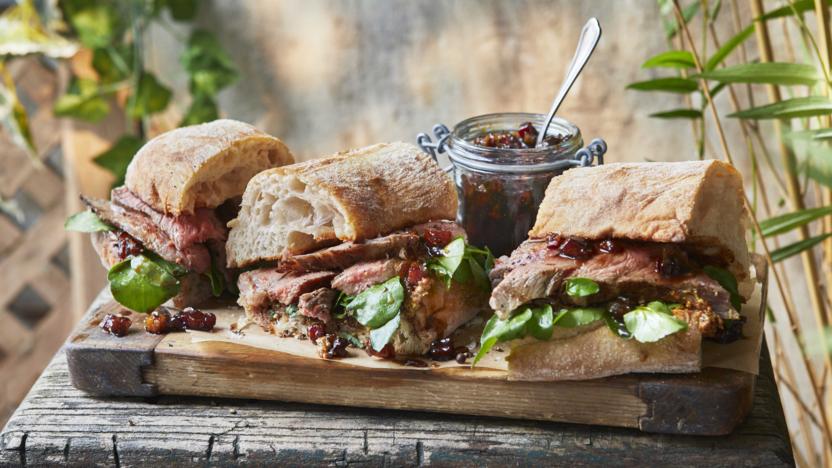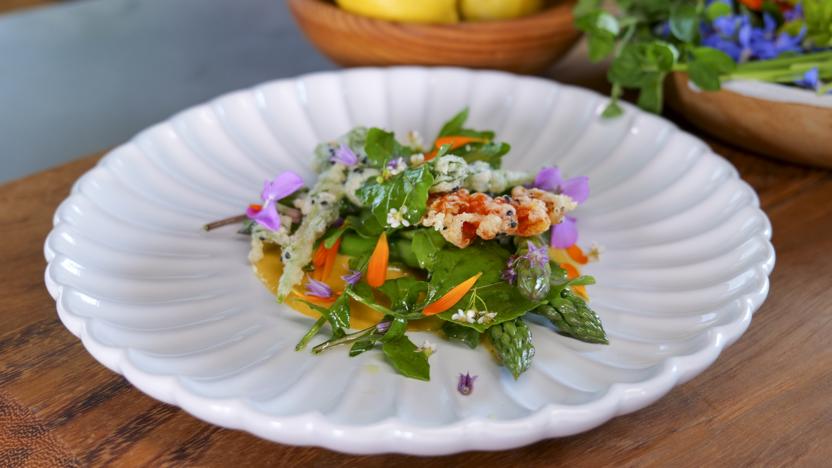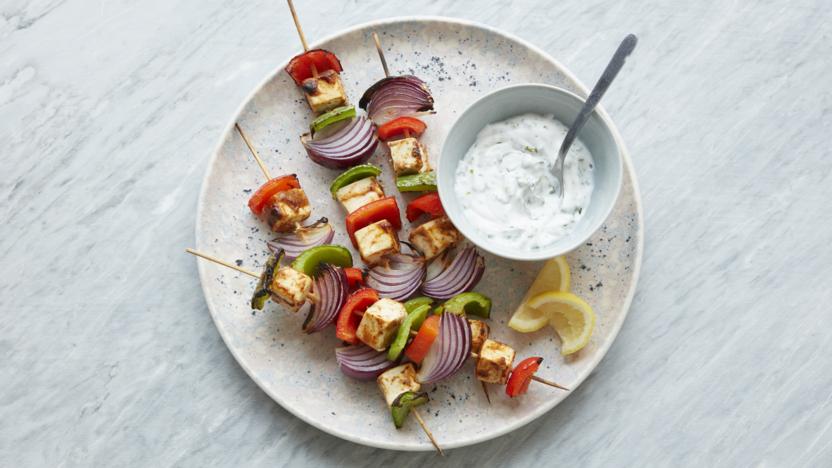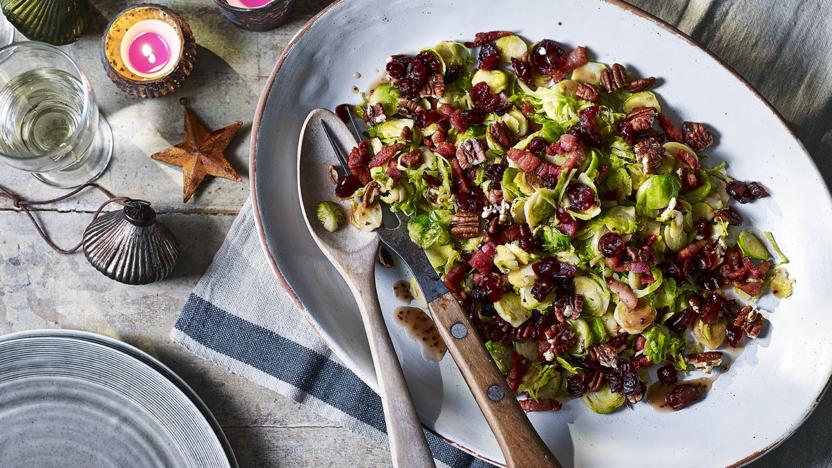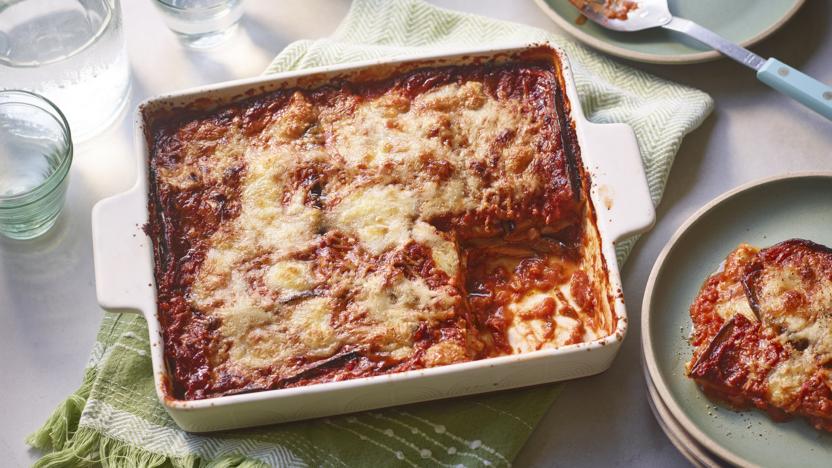Salad leaves recipes
Salad leaves are lettuce leaves and leafy herbs, plants and shoots that are used in salads. The range of salad leaves available in supermarkets is improving all the time. Where once it seemed that crunchy mild iceberg or soft round-leaved lettuces were the only option, now we can choose from a wide variety of textures, colours and flavours. You only need one variety of lettuce leaf to make a salad, though it can be tasty to mix three or four whose flavours complement each other; any more than this and the flavours will compete. Aim for a mixture of leaf shape, texture, sweetness and colour: balance peppery rocket with mild, buttery lamb's lettuce and straggly-textured fris茅e and colourful oak leaf or lollo rosso to make a pretty tangle of salad, then garnish with a tender herb such as dill.
There is nothing worse than a boring bowl of green leaves served at a table with a meal. I like to add some crunchy vegetables to it and I have a trick to let you make this ahead so the lettuce doesn鈥檛 wilt even though you prepared it a couple of hours ago!
More salad leaves recipes
Buyer's guide
Ready-washed salad leaves are convenient but deteriorate quickly and sometimes are rinsed with chemical mixtures to prolong their shelf life. Look instead for those that have been washed only in spring water, or buy unwashed leaves. Don't forget speciality greengrocers and farmers' markets, which will feature more unusual options such as dandelion, purslane and Treviso when they're in season.
Storage
Salad leaves with dirt still clinging to them may seem inconvenient, but leaving them unwashed and, where appropriate, attached to their stem is the best way to keep them fresh. Store them in a plastic box or unsealed bag in the salad drawer of the refrigerator.
Preparation
To prepare salad leaves, separate them from the stem if necessary and remove any discoloured patches. Gently swirl the leaves in cold water (or a mixture of water and white wine vinegar if you're concerned about bugs). Repeat as necessary. A salad spinner will help you dry them quickly and gently - your leaves should be thoroughly dry before use so that they do not dilute the dressing.
In general, it's best to tear salad leaves to the size preferred. If you're making a chopped or shredded salad, be sure to use a sharp knife to prevent the leaves from bruising. Bear in mind that the roots of some salad leaves such as corn salad, lamb's lettuce and m芒ch茅, are edible. To dress salads, pour the dressing into a salad bowl, add the leaves, then mix gently with your hands until the leaves are evenly coated.
